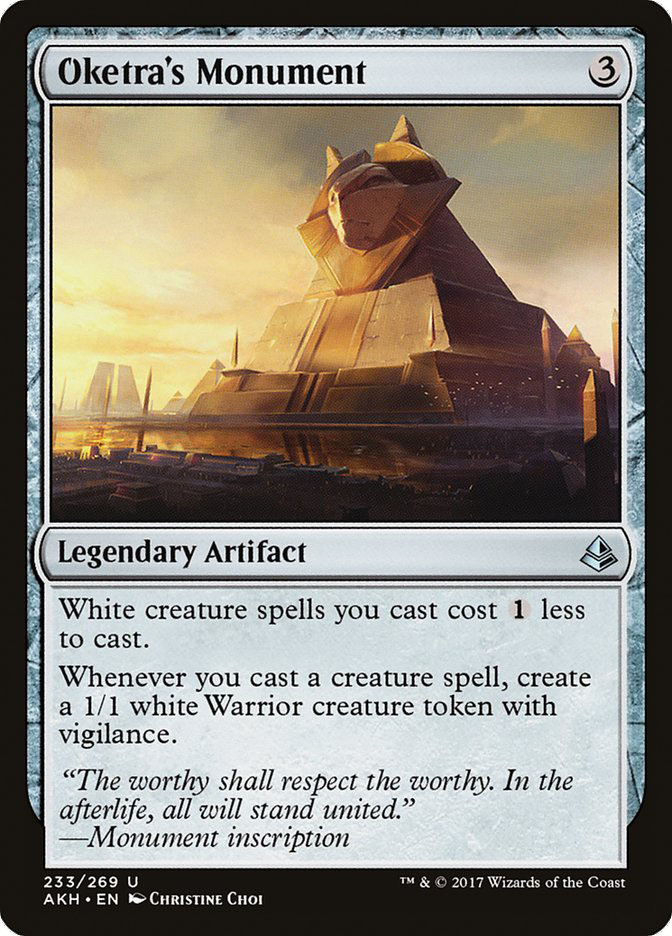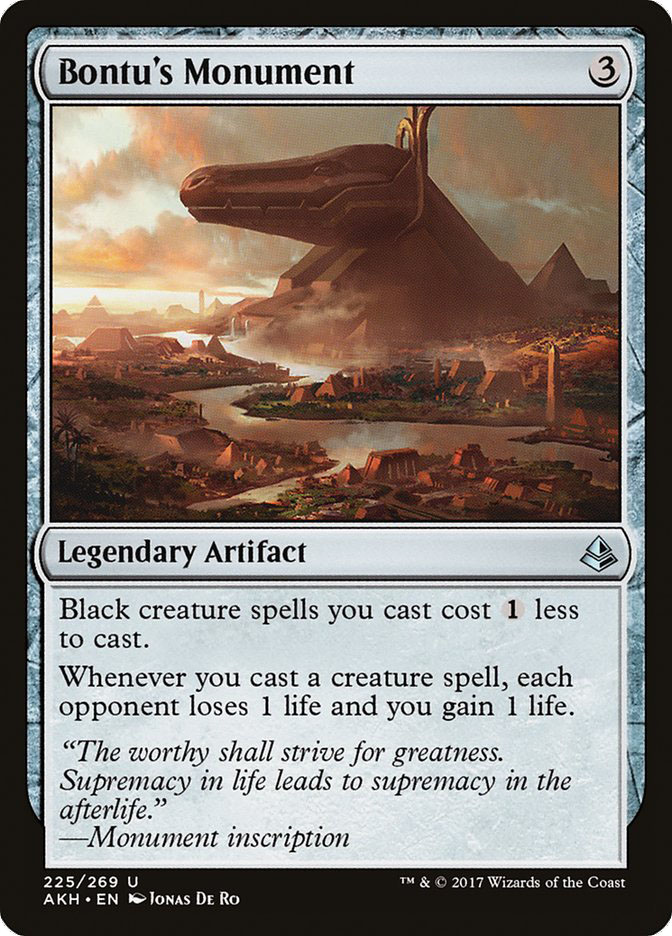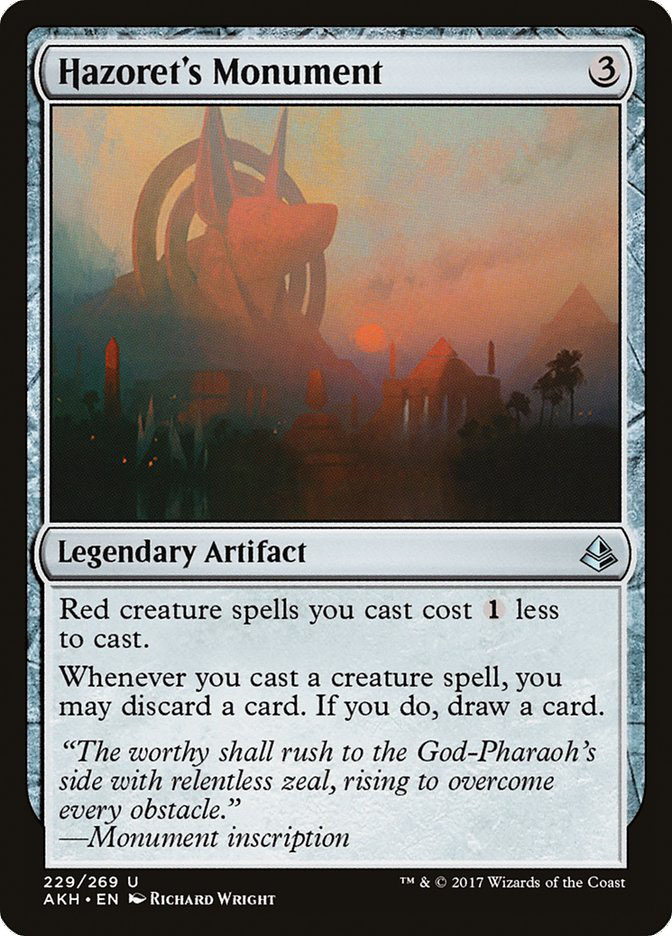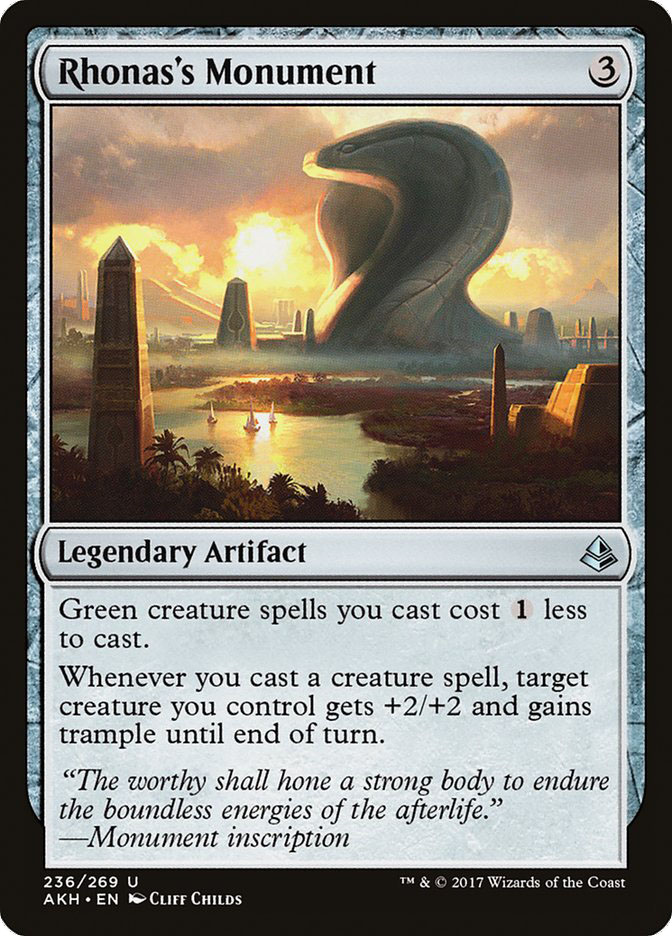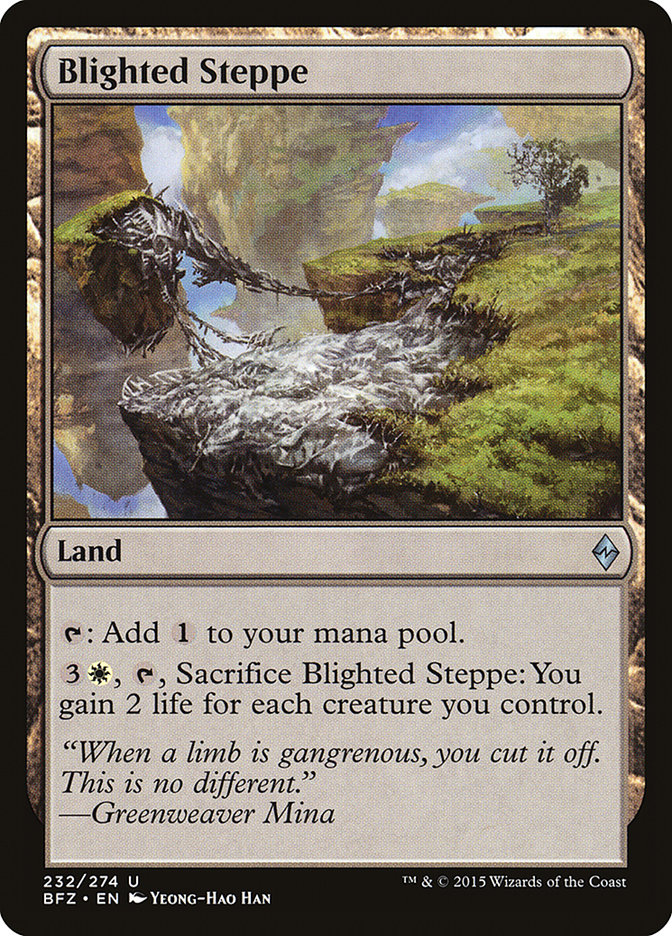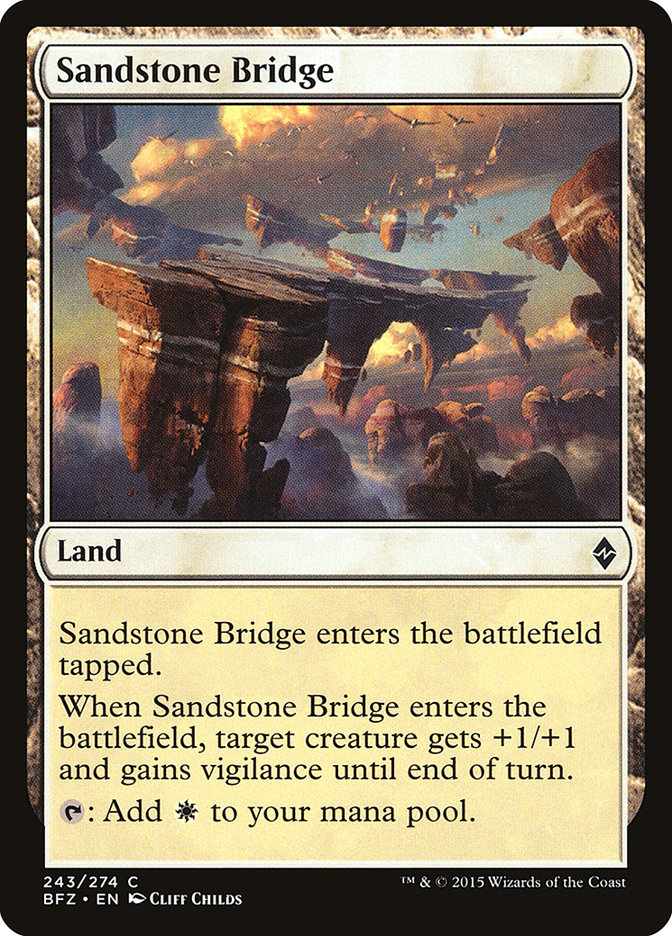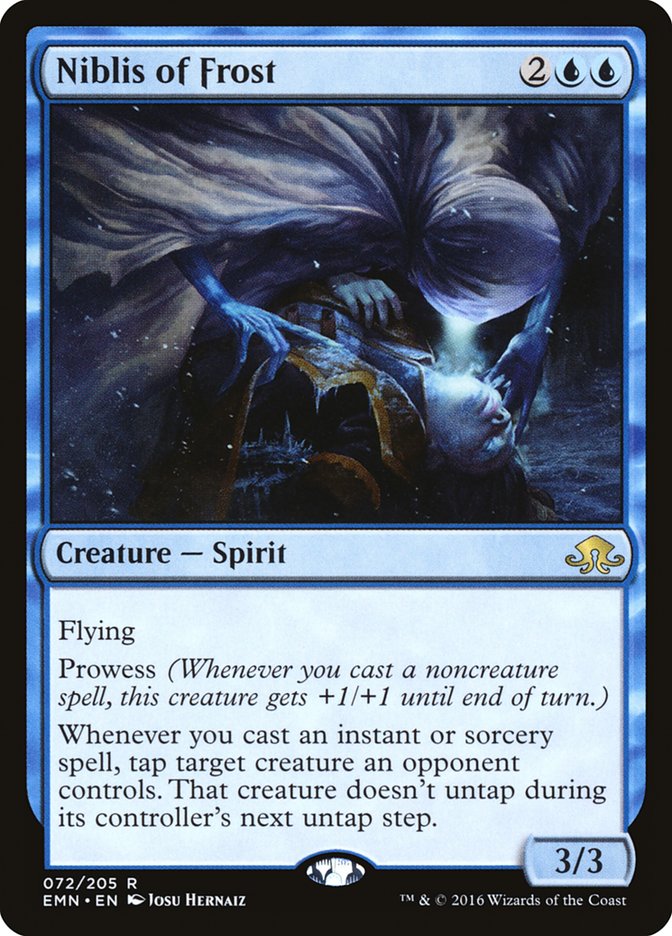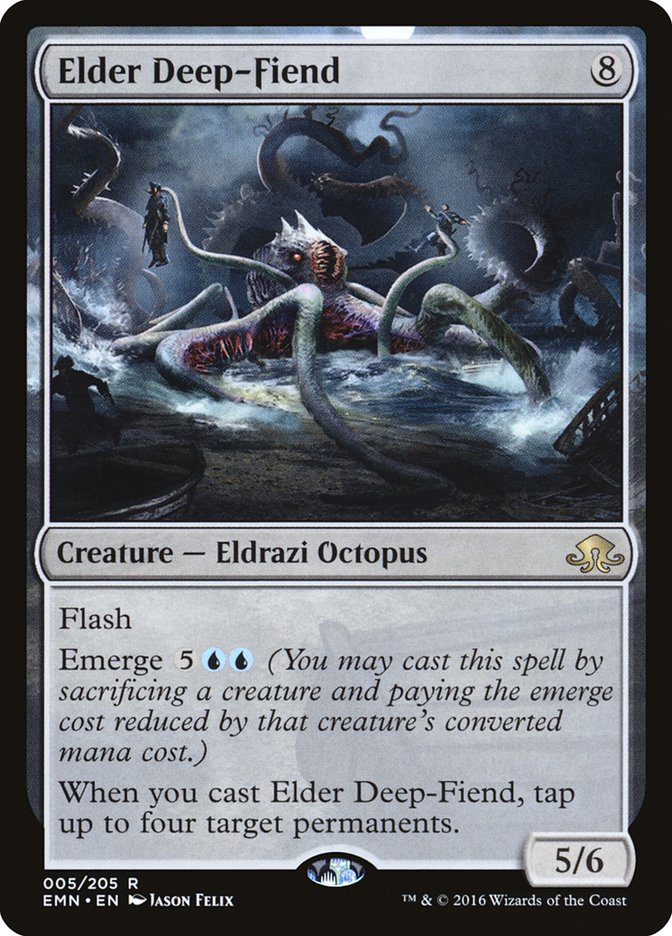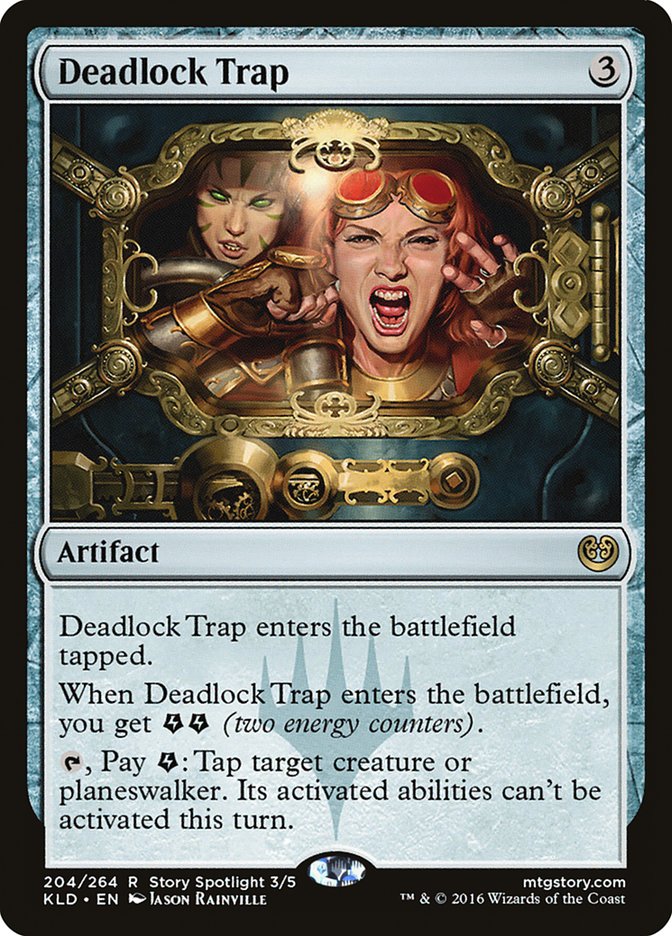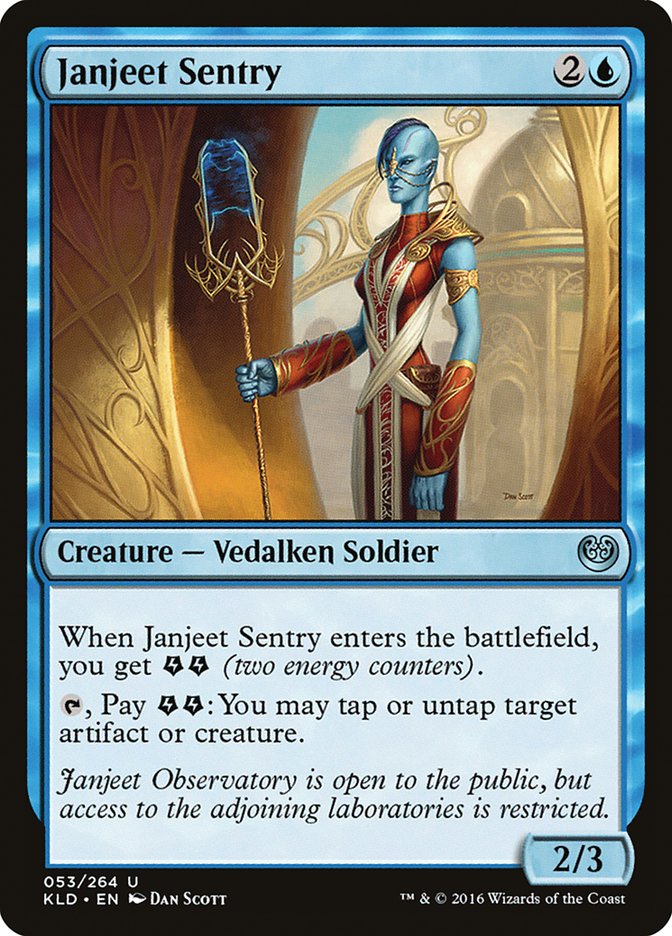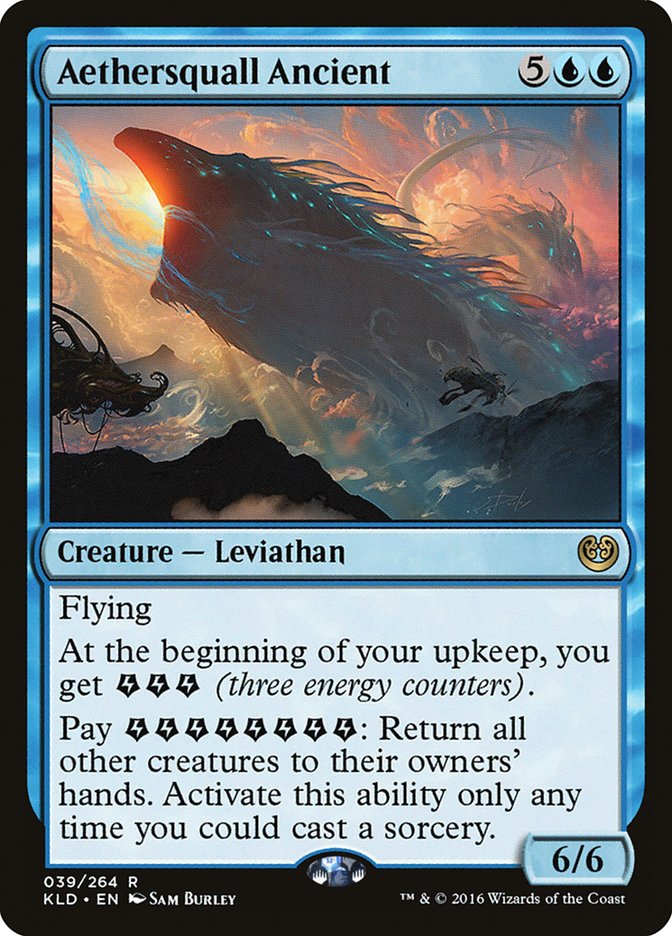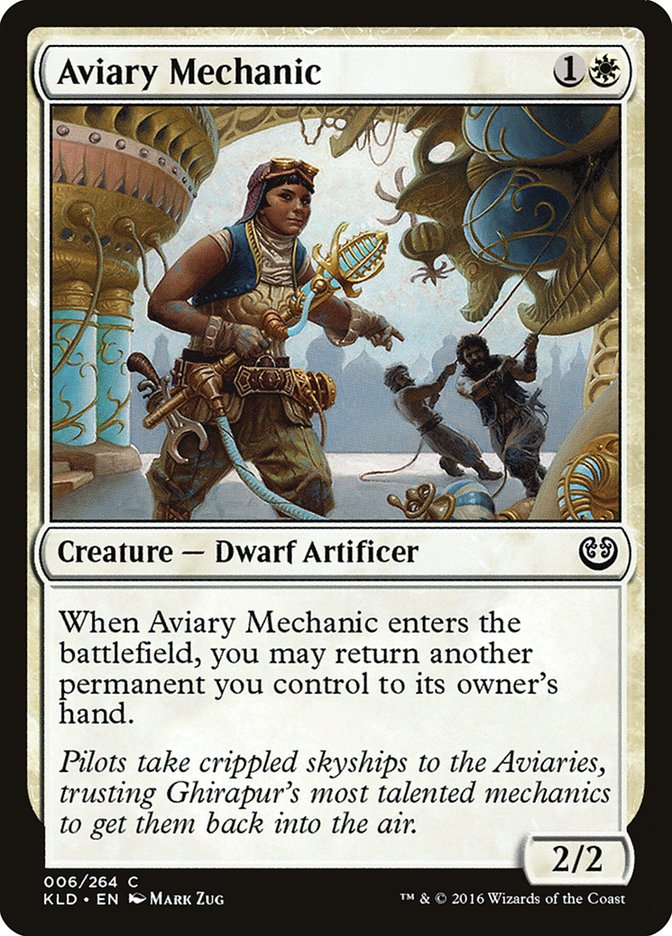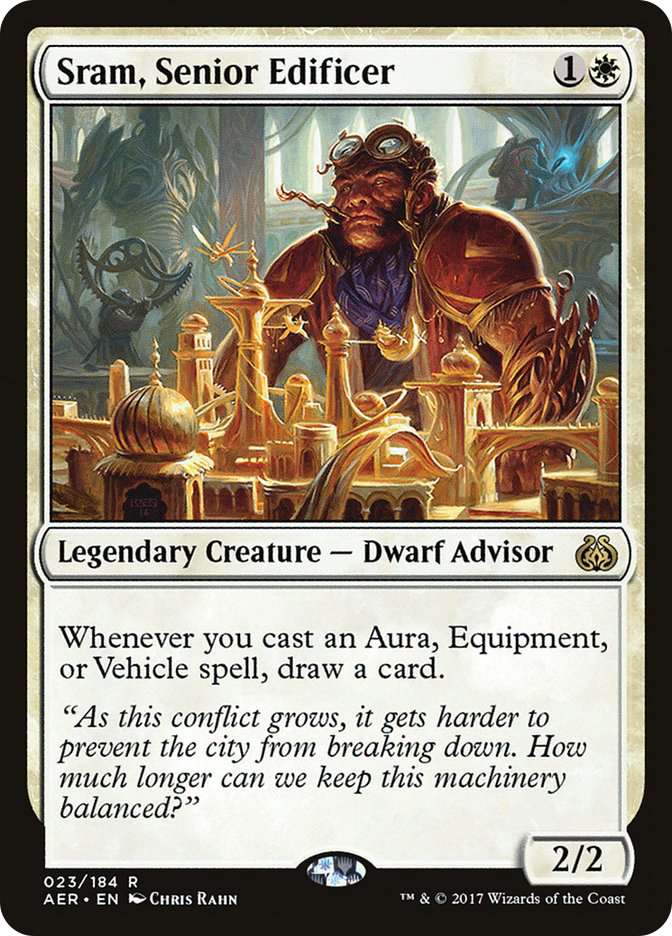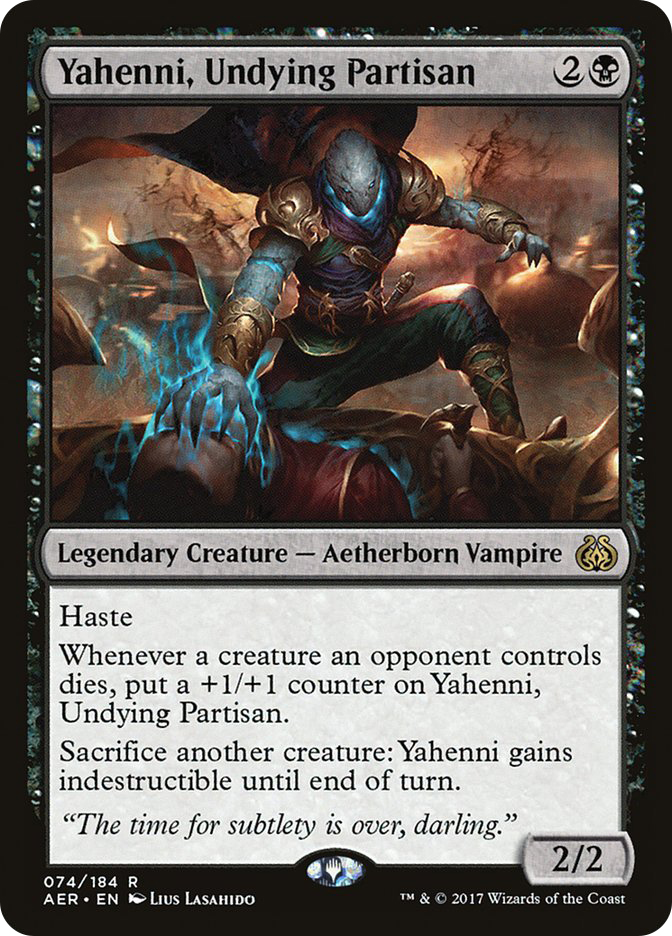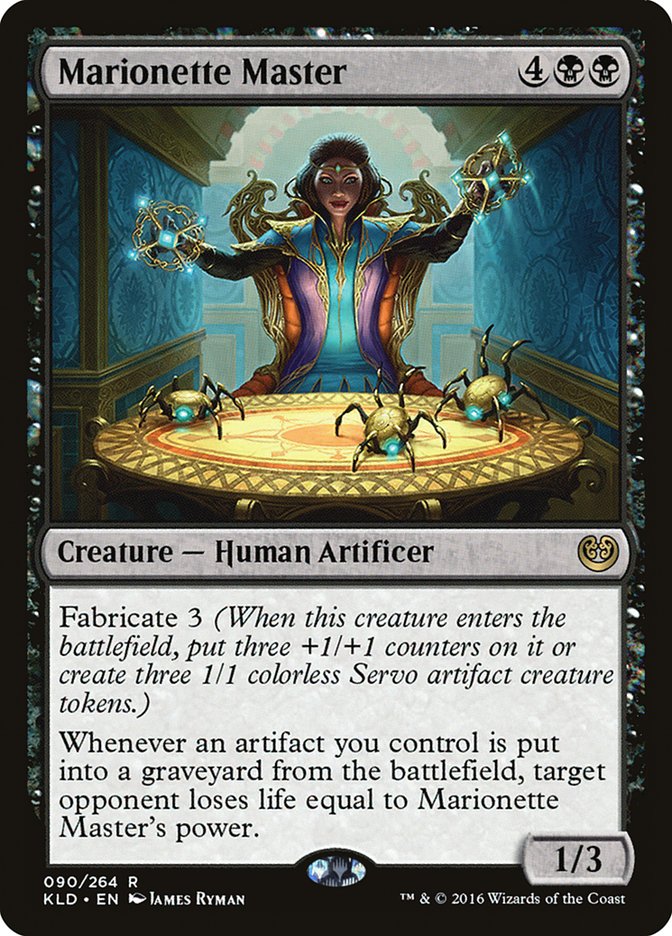seeing
bans
in Standard and, in some cases,
emergency
bans, means one thing: Pandora’s box has been opened. After several years in exile, the idea
of a regular Standard ban has returned, which makes the more-frequent ban
announcement schedule a cause for concern for a format that once felt
insulated from this development-oriented correction.
With that potential, each of us here at StarCityGames.com were, in an
oversimplification, given one instruction for our content this week: Watch
out for cards that could be banned.
Well, were they?
Combatants of Modern and Standard tournaments respectfully had seen their
fill of these two format-defining cards and, in the event that either of
them might be splintered by the BanHammer, we steered clear.
No problem for me; Modern’s usually at the back of my mind anyway, and I’m
just as sick as you of testing against turn four Ulamog, the Ceaseless
Hunger.
With no new Hour of Devastation previews, though, I’ll have to
move towards something untouched, yet safe. Well, maybe that’s what we were
supposed to do.
Instead of just choosing a safe path to follow, I wanted to go really rogue. This was an opportunity to take our editor Danny
West’s words to heart: What he said was “tread carefully,” but what I heard was “who knows what they’ll ban, steer
clear of anything playable by a sane individual, Matt.” Don’t blame me;
some things just get lost in translation.
I’m writing this before we get the big news of a Mythic Rare ban in
Standard, or potentially, before we hear tthe sound of silence and the pitter-patter of
falling tears of Standard Magic players sitting down on Friday for another game against a sea of NIAMs: Non-Interactive Aetherworks
Marvel. That being said, the cards (yes, cards) I’ll be working with
today are going to do their thing regardless of a ban.
That’s right, folks; it’s monument time!
The God-monuments in Amonkhet have a casual
player’s face drawn all over them. Casual players like cost reduction.
Casual players like cool effects that happen just from playing Magic. Casual players like artifacts. What’s that? All
players (who started playing after the Mirrodin development
fiasco) like artifacts? Fine by me.
To a serious player, these monuments are everything a Magic card shouldn’t be. They’re bad topdecks. They don’t immediately impact
the battlefield. They’re bad in multiples. Cost reducers are traditionally bad with
a few rare exceptions, e.g. Goblin Electromancer in Storm. They can’t attack
or block. Yeah, I hear you. But there’s another benefit to the Monuments
that we’re missing: monetary cost.
The monuments incline a player to play spells that align with the color of
the cards they’re playing. While the trigger occurs for all creature
spells, the cost reduction applies specifically to one color. Thus, playing
a mono-colored deck makes more sense if you want to use some deck real
estate impacting specific colors. For players who work on a budget, not
spending money on a pricey mana base and powerful multi-colored cards is an
important consideration. Mono-colored decks have often appealed to that
segment, and while Standard is, in general, quite inexpensive, not having
to pick up four Wandering Fumaroles and four Spirebluff Canals is tempting.
Both the cost reduction and the cast trigger of the monuments leave
the door open for some fun brewing potential. Different creatures within
those colors line up well with their monument’s effects. That being said,
some monuments are, “strictly” speaking, more playable than others. Thanks
to a considerable amount of brewing and grinding with each of the five
monuments, I’ve saved you from the hassle of figuring out which those are!
So out of the five, which one is the worse? If you look at the side by
side, it shouldn’t come as a surprise.
As a general rule, blue creatures are among the least efficient in combat.
Blue creatures have utility, or some other positive qualities that make
them worth playing over instants, sorceries, or the planeswalkers for which
the color is best known. Although previously, efficient blue fighters have
existed, this Standard doesn’t feature any. Thus, blue creature cost
reduction is kind of lame. Moreover, Kefnet’s Monument’s trigger is perhaps
the narrowest, requiring your opponent to control a tapped creature,
something that you can’t very well control. It’d be one thing if the
monument tapped it for you, but in lieu of that, we have to provide the
tapping ourselves.
We got it.
A Spirit-based plan lets us get the jump on our opponent; getting their
creatures sideways means we can keep them tapped, and flashing in creatures
of our own means we can work an end step effectively. Reducing flash
creature costs makes them much easier to play, and the ability to trigger
any monument ability instantly seems helpful. If you put the trigger on a
creature to prevent untapping, you can then tap it and the “doesn’t untap”
effect will actually matter.
We have a critical mass of Spirits in blue, and together, they can form an
interesting deck.
Creatures (24)
- 4 Rattlechains
- 4 Niblis of Frost
- 4 Elder Deep-Fiend
- 4 Mausoleum Wanderer
- 4 Nebelgast Herald
- 4 Metallic Mimic
Lands (22)
Spells (14)

Metallic Mimic seems like a card I’m happy to play when we have one
creature type dominating the base; moreover, it can be effectively targeted by
Essence Flux, which also helps any of my team dodge Fatal Push, Harnessed
Lightning (no energy for them, either!), or even a Sweltering Suns, if the
rebounding creature is then large enough to survive the hit. Gift of Tusks
is great for invalidating an Ulamog, the Ceaseless Hunger or pumping up the
power of your biggest creature. Cheap spells are important to keep Niblis
of Frost, which only has fourteen ways to trigger, remain relevant.
Also, Skyline Cascade, how you feel?
So this deck is cute, but it felt a big weak. Without Spell Queller,
Selfless Spirit and gang, you’re just playing a bad Spirit deck. I’d rather
go a bit bigger.
Trophy Mage, just like Trinket Mage and Treasure Mage before it, is a 2/2
for three mana that finds a specific cost of artifact. Trophy Mage, in this
case, finds any of the five monuments. We can play less of them,
give Trophy Mage juicy targets besides Kefnet’s Monument, and build a deck that
cares about getting on the board, tapping things down, and if it’s
important, untapping things, too.
Energy also gives blue an additional dimension, and with enough support,
you can actually be very efficient with your threats, card draw, and the
way you interact with your opponent.
Creatures (29)
- 2 Hedron Crawler
- 4 Elder Deep-Fiend
- 4 Glint-Nest Crane
- 1 Aethersquall Ancient
- 2 Foundry Inspector
- 4 Janjeet Sentry
- 4 Trophy Mage
- 1 Quicksmith Spy
- 2 Walking Ballista
- 1 Kefnet the Mindful
- 4 Vizier of Tumbling Sands
Lands (24)
Spells (7)

This one looks like more fun.
The interaction of tapping, untapping, and pressure via cards like Elder
Deep-Fiend mean this deck can keep the tempo real. These cards are perfectly
fine even in a low creature-count deck; the draw power this deck can produce helps
keep it relevant, even if you’re forced to outpace removal or a control
finisher. Several cards interact well; Vizier of Tumbling Sands can untap
anything from a Janjeet Sentry to a Deadlock Trap, or whatever you’ve
targeted with your Quicksmith Spy. Kefnet, the Mindful, allows us to rebuy
Skyline Cascades, and Ghirapur Orrery lets us play two at once, keeping
your opponent a step behind. The deck needs only one Kefnet’s Monument, as
Trophy Mage can go find it.
This one plays better, too, with more reliable Elder Deep-Fiend, and more
permanent, flexible pressure. In my testing, I found the numbers changed a
lot, and I opted for consistency over power (hence the Hedron Crawler).
The deck produced plenty of energy, and I loved the combination of
Decoction Module, Fabrication Module (tutorable with Trophy Mage) and
Walking Ballista. It let me play out my hand and build up a beastly Walking
Ballista, ready to pick off creatures I didn’t want to use tap abilities
on.
I’m happy with both lists, considering they’re based on a pretty lousy
monument. There’s probably room for more fun, but for now, we’ll stick to
this.
So what’s the fourth best?
Don’t get me wrong, I like free token producers as much as the next guy,
but with fewer ways to leverage the extra creatures, like improvise or
convoke, I’m a little less interested. Still, one card might bring me
around to this monument.
For W, you can play a 2/2 and bounce another white creature, which you can
then recast, getting two tokens in the process. Not too shabby. If, of
course, you get two Aviary Mechanics, you can pay as much W as you have to
get as many tokens as possible. Not to mention revolt triggers…hmm…
This exceptional card-drawer is only mediocre as a product of its
environment; alongside the likes of Puresteel Paladin, Sram, Senior
Edificer is clearly a winner. Still, we’re going to need cards to fuel our
cheap, white spells, and the Equipment and Auras I use, if leveraged
correctly, can really drive the deck. Oops, there was a chance for a
Vehicle joke there; “drive?” Do I change the whole deck to…nah.
Hmm, I guess that’s two Dwarves. Maybe there’s something to this plan?
Let’s light the fire!
Creatures (23)
- 4 Toolcraft Exemplar
- 4 Aviary Mechanic
- 2 Fairgrounds Warden
- 2 Sram, Senior Edificer
- 4 Metallic Mimic
- 4 Solemn Recruit
- 2 Restoration Specialist
- 1 Oketra the True
Lands (22)
Spells (11)

Toolcraft Examplar has plenty of artifacts to pair with, both Equipment and
non-Equipment artifacts. Solemn Recruit, perhaps the best finisher this deck
could ask for, is a Dwarf and, when it hits you, it’s going to pack a
wallop. Fairgrounds Warden, this season’s Fiend Hunter, is also a Dwarf,
and the Auras and Equipment make it a little less shrimpy.
Stitcher’s Graft is a cheap artifact for either Sram, Senior Edificer or
Toolcraft Examplar, but with Sandstone Bridge, vigilance means your
creature doesn’t tap to attack, making it all the deadlier. Plus, combined
with the plentiful double strike in this deck, this one-mana artifact
adds six power. Here, the tokens are more to keep the pressure on after
your real team dies, and I think that’s a fine use of the 1/1 warriors. The
deck is fairly aggressive and consistent, and it does allow for those fun,
Magical Christmasland moments. Turn one Toolcraft Examplar, turn two
Metallic Mimic, turn three Solemn Recruit as a 3/3, turn four Trial of
Solidarity plus Gryff’s Boon, attack for twenty-one? Got ’em.
Choosing the middle monument was tough, but I’m going to base it off lowest
potential as opposed to lowest playability. Still, it’s close.
This card was a mystery for a while, and I’ve built three completely
different decks trying to figure out the right plan to make the deck fun,
consistent, and powerful. Ultimately, though, I landed on a deck with
artifacts and a name appropriate for the monument we’re including.
Ways to create creatures and ways to burn them for value with Zulaport
Cutthroat and other draining mechanics seems like a simple, synergetic way
to get your opponent from twenty to zero. Every part helps drain life and
helps you cast things that drain life.
Creatures (30)
- 4 Zulaport Cutthroat
- 4 Voldaren Pariah
- 3 Scrapheap Scrounger
- 4 Weaponcraft Enthusiast
- 4 Syndicate Trafficker
- 3 Marionette Master
- 3 Yahenni, Undying Partisan
- 4 Hope of Ghirapur
- 1 Sly Requisitioner
Lands (22)
- 21 Swamp
- 1 Westvale Abbey
Spells (8)

It used to be that Geist-Honored Monk, Cloudgoat Ranger, and Pia and Kiran
Nalaar were the most powerful thing you could be doing with your mana.
Multiple bodies for the price of one used to be the best deal going, and I
think that, with a Blood Artist lookalike running around, we should give it
another shot.
This six-mana rare’s no Grave Titan, but it is Wrath-proof; that is, even
if your opponent sweeps the board, you’re still doing something. If you
don’t have to go wide and fabricate, Marionette Master basically reads,
“whenever an artifact you control is put into a graveyard, target opponent
loses 4 life.” That’s a lot, right? If you’re already working on their life
total, this can finish the job. This deck’s artifacts are sacrifice-ready,
either because the deck only needs one in play at a time, or because they
can come back later. Or you make a lot of them.
The deck isn’t particularly surprising, but it is effective. It’s
easy to get everything online that you need, and each part of the deck can
pick up the slack of the others. With protection from niche players like
Declaration in Stone (just sacrifice the target!), this is a token deck
with pushing and staying power.
The best two monuments, in my opinion, are worth some extra time,
especially the best of all. Assuming we don’t get some saucy previews from Hour of Devastation!
The monuments are blank canvases; low-power, but surprisingly versatile to
build a deck around. Have you found a sneaky way to use the cost reduction
or the triggers to come up with something spicy?




